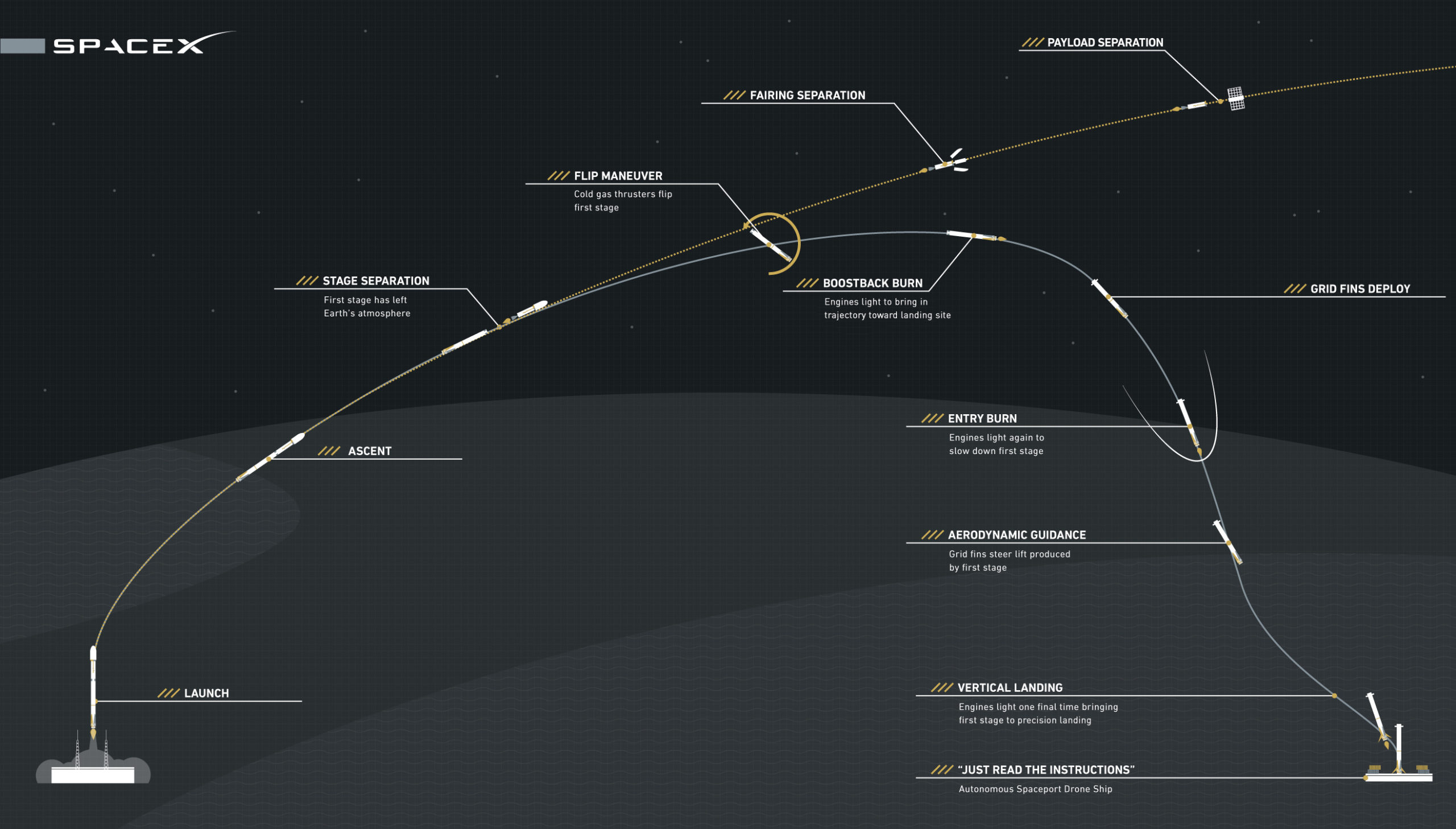SpaceX, a company full of talented and intelligent people, has spent the last year exploding some really expensive hardware in the middle of the Atlantic. But believe it or not, the company’s goal isn’t actually to rack up YouTube views — it’s to build a reusable rocket system. Here’s how they plan to stop screwing up.
In an excellent and detailed post on the SpaceX blog, the company lays out some of the challenges it’s faced in trying to build a reusable launch system. Unlike the Space Shuttle, which was faintly plane-shaped and therefore easy to land, SpaceX wants to recover the main rocket booster, using its rocket engine to slow down from free-fall, and then land vertically — something it’s previously described as like “balancing a rubber broomstick on your hand in a wind storm”.
To manage that rather delicate balancing act, the Falcon 9 rocket is tricked out with a few extra toys:
Our rocket has small, foldable heat-resistant wings called grid fins needed for steering the first-stage as it plummets from the edge of space through Earth’s atmosphere, cold-gas thrusters on the top of the first-stage that are used to flip the rocket around as it begins its journey back to Earth, and strong but lightweight carbon fibre landing legs that deploy as it approaches touchdown.
A successful landing would also be a milestone achievement for autonomous technology. Every part of the landing system, from the barge to the guidance fins to the rocket booster, is controlled autonomously by an on-board computer. It’s a decision born of necessity, since everything happens so fast as to make a remote-control completely impractical. But as DARPA proved, autonomous robots — even those being aided by humans — have a long way to go.

SpaceX’s first attempt to land a Falcon 9 came back in January, but was foiled when someone did some bad maths:
The first attempt to land on a drone ship in the Atlantic was in January, and while we came close, the first stage prematurely ran out of the hydraulic fluid that is used to steer the small fins that help control the rocket’s descent. The vehicle has now been equipped with much more of that critical fluid for steering purposes.
The second attempt was in April, and came much closer:
About 10 seconds before landing, a valve controlling the rocket’s engine power (thrust) temporarily stopped responding to commands as quickly as it should have. As a result, it throttled down a few seconds later than commanded, and — with the rocket weighing about 67,000 lbs and travelling nearly 200 mph at this point — a few seconds can be a very long time. With the throttle essentially stuck on “high” and the engine firing longer than it was supposed to, the vehicle temporarily lost control and was unable to recover in time for landing, eventually tipping over.
Watch the (completely spectacular) fireball from that failed landing, and you could be excused for thinking that SpaceX still has a long way to go. But looking at the bigger picture — by which I mean the new long-range tracking footage of the same landing — and it’s suddenly clear how much SpaceX has achieved in such a short amount of time.
Weather permitting, the next attempt at a landing will happen this Sunday on board a new drone ship, ‘Of Course I Still Love You’ (the last version was ‘Just Read The Instructions’). You’ll be able to tune in to a livestream, where you will either see history being made, or some really quite expensive fireworks.
[SpaceX]
Top image: SpaceX Falcon 9/April 14
